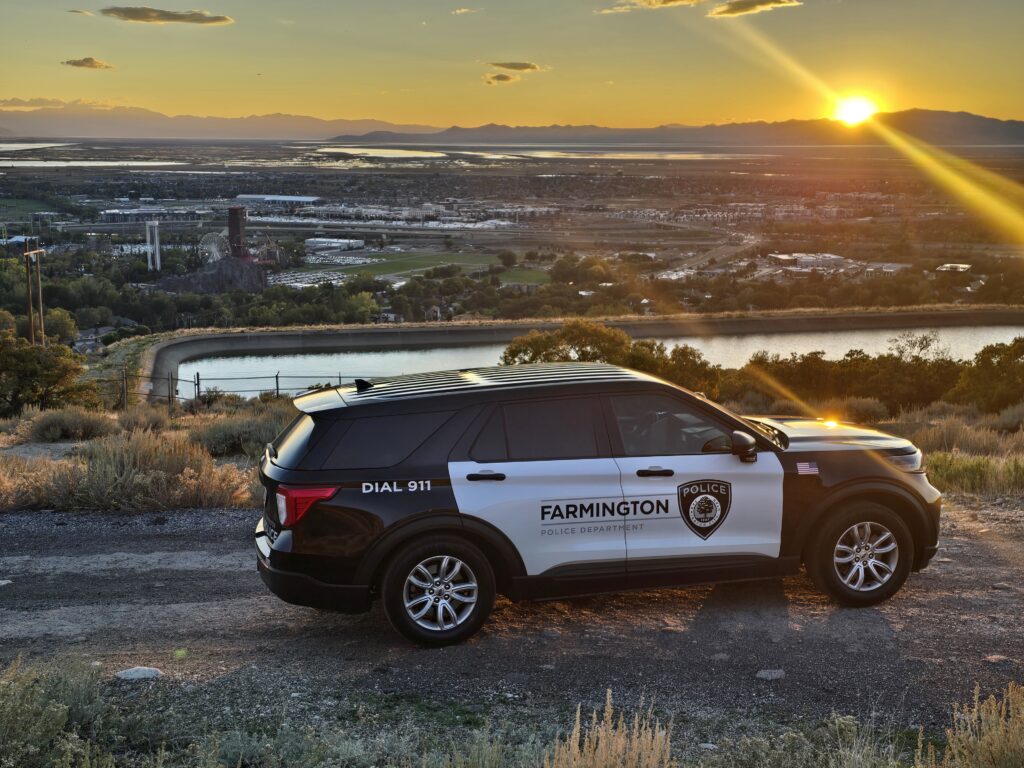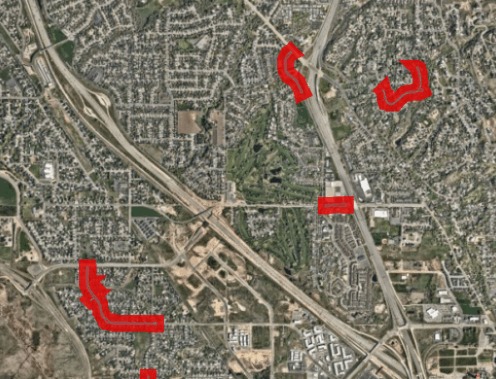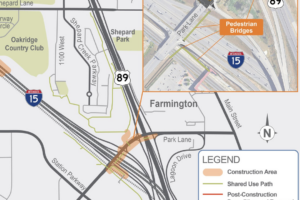Does Farmington Police Department offer a Safe Exchange Zone?
Yes, Farmington Police Department has a “Safe Exchange Zone”. The safe exchange zone is an area that is well lit, and under 24-hour recorded video surveillance, and within a few feet of the Police Department’s front doors.
The Safe Exchange Zone is meant to offer residents and visitors an area that is safe to exchange kids between parents or conduct personal transactions.
The two-stall safe zone is located in the parking lot south of Police Department building and west of the front doors. The two designated stalls are each marked with a sign.
For information or questions on the Safe Exchange zone, please contact Farmington Police Department at (801)-451-5453.
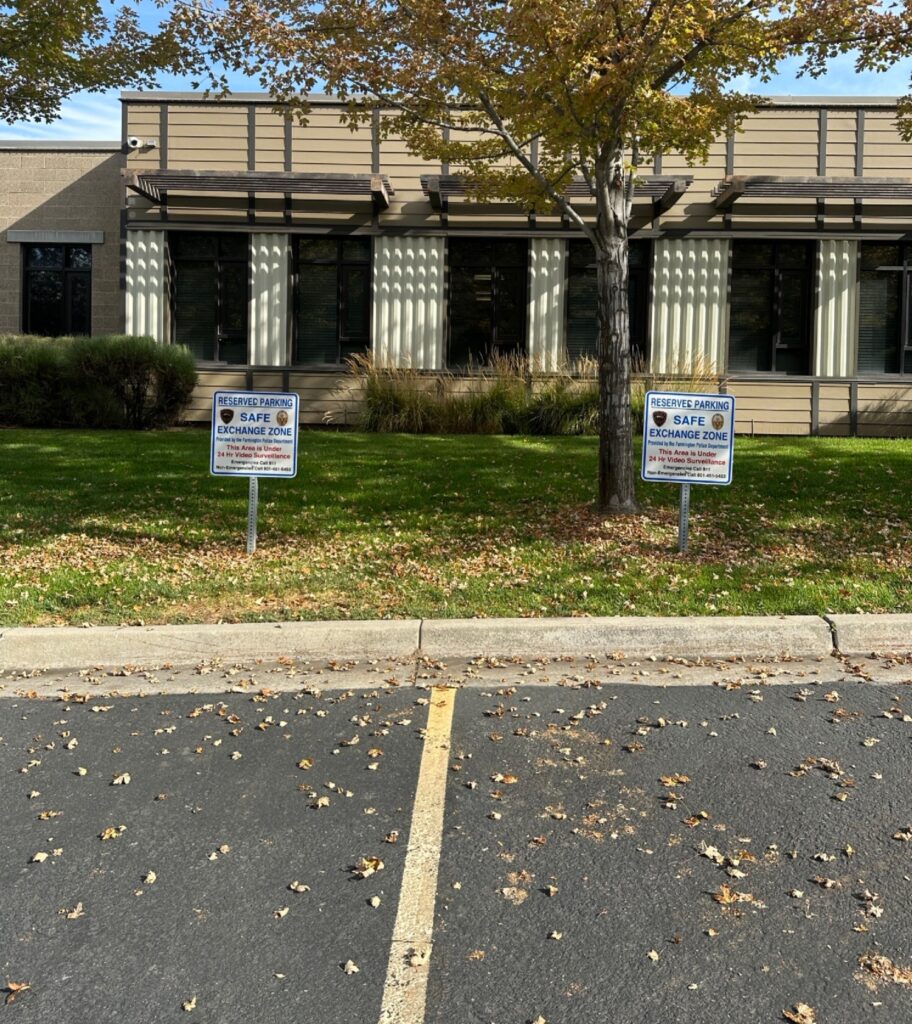
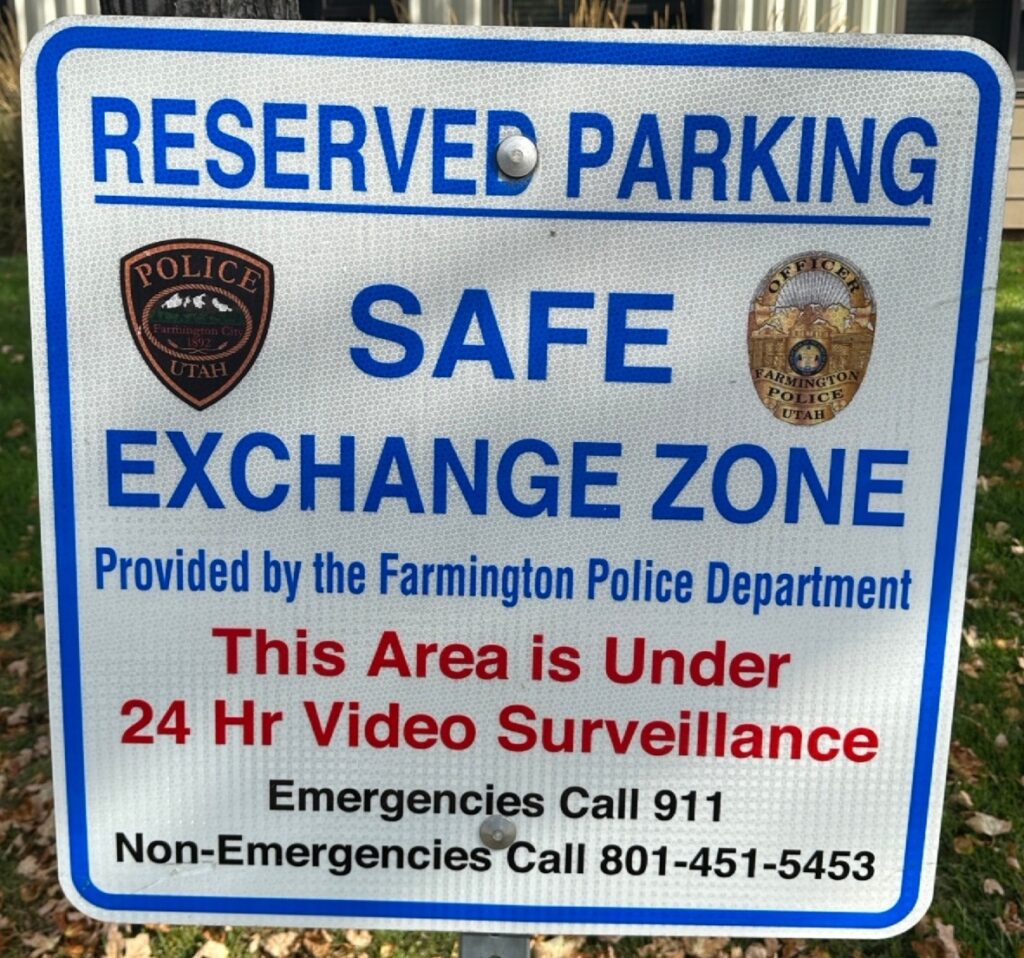
How do I retrieve my property/evidence?
To collect your property or evidence, please arrange an appointment with our Evidence Custodian by calling 801-939-9241.
Property Release Information:
Evidence – Items held as evidence may be released to the owner by appointment during regular business hours. Evidence items may only be released upon authorization from the prosecuting attorney or the responsible officer. Evidence items cannot be released until 30 days after sentencing on state cases and up to 18 months after sentencing on federal cases. All property not held for evidence in a pending criminal investigation or proceeding and held for six months or longer where the owner has not been located or fails to claim the property may be disposed of in compliance with existing State law.
Safekeep – Items held as evidence may be released to the owner by appointment during regular business hours. These items are held for 90 days, after which the items will be disposed of in compliance with existing State laws.
Found Property – Items held as found property may be released to the owner, with proof of ownership, by appointment during regular business hours. These items are held for 90 days and then destroyed per state law if not claimed.
Firearms – A BCI background check must be performed on the owner/third party of every firearm released. These background checks can take over 24 hours – please contact the Property and Evidence office before the collection of firearms. Proof of ownership is required to release firearms. Please note: not all firearms can be released – several considerations go into the ability to release firearms.
Third Party Releases – Evidence personnel can only release approved items to a third party with a notarized power of attorney or a notarized letter from the owner.
Does Farmington Police Department offer a Citizen Academy?
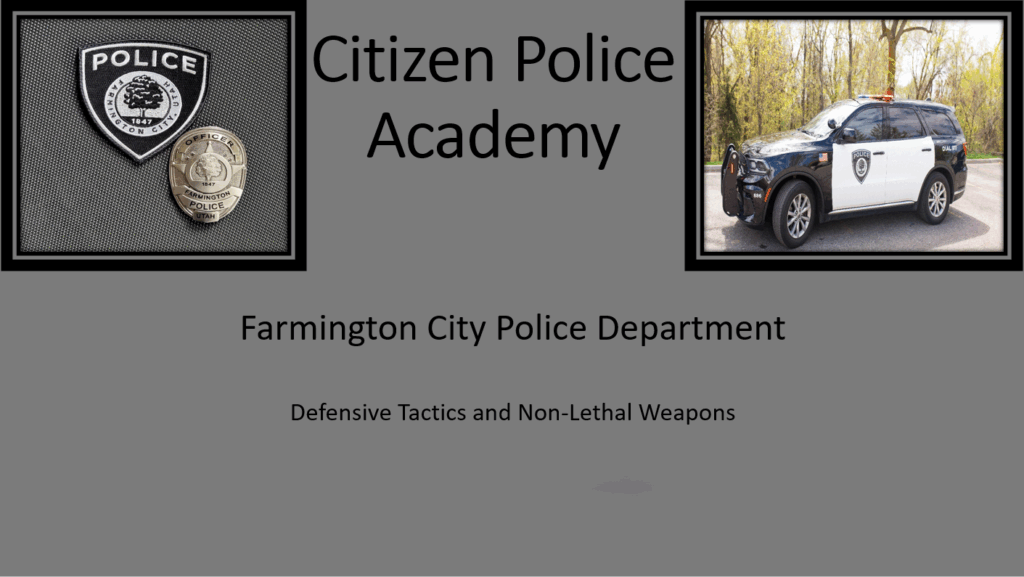
Yes, the Citizen Police Academy is an exciting opportunity to gather information while providing a behind the scenes look at various functions of the Police and Fire Departments of Davis County.
The premise of our program is to educate citizens so that they can better understand local law enforcement and how it functions. Additionally, those completing the program have the potential of becoming more productive within their own neighborhoods and communities.
During the course you will experience: classroom presentations, lectures, hands on experiences and on-site tours that offer participants valuable insight into the operations of the Public Safety departments of Davis County. These experiences along with true established relationships with law enforcement further improve the quality of life throughout the county, whether residential or business.
The Citizen Police Academy is designed to build a bond of mutual trust and respect between the police departments and the citizens of the county. Additionally, the academy highlights the importance of citizen participation in public safety, helping our community remain free from the fear of crime.
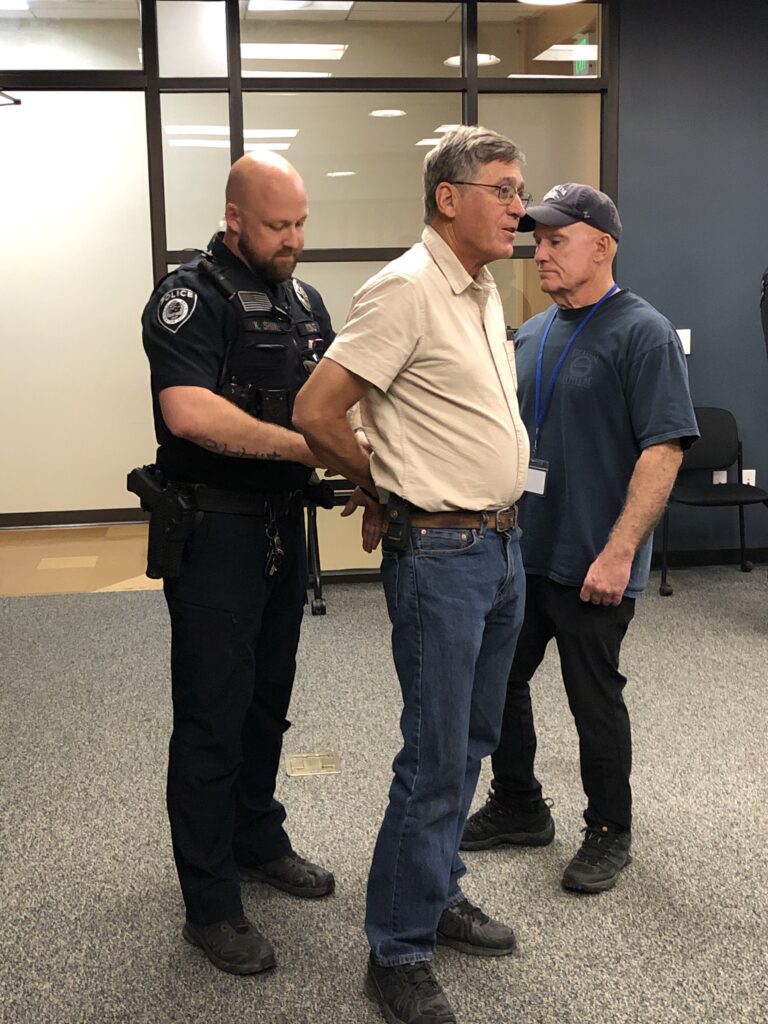
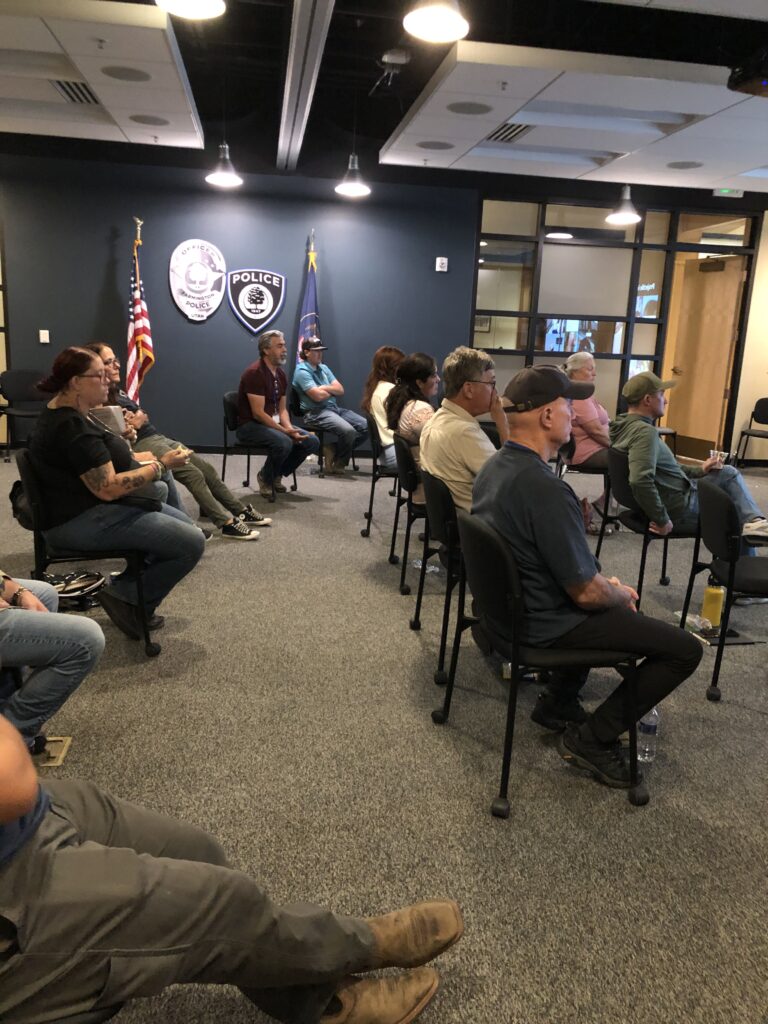
For more information, go to the Citizen Police Academy website at:
Does Farmington Police Department offer fingerprinting services?
No, you can visit any of the following locations to get assistance.
**We recommend verifying with the listed agencies below that this service is still available before traveling to their location.
DAVIS SCHOOL DISTRICT
45 E. STATE STREET, FARMINGTON, UT, 84025
801-402-5261
3.25 MILES AWAY
DIGITAL PRINTING
DAVIS COUNTY SHERIFF’S OFFICE
800 W STATE STREET, FARMINGTON, UT, 84025
801-451-4100
1.4 MILES AWAY
INK PRINTING ONLY – MUST LIVE OR WORK IN DAVIS COUNTY
CENTERVILLE POLICE DEPARTMENT
250 N MAIN STREET, CENTERVILLE, UT, 84014
801-292-8441
3.9 MILES AWAY
INK PRINTING ONLY
UTAH BCI
4315 S 2700 W Suite 1300, Taylorsville, UT 84129
801-965-4445
23.8 MILES AWAY
DIGITAL & INK PRINTING AVAILABLE
Does Farmington Police Department offer a pharmaceutical drop-box?
DAVIS COUNTY SHERIFF’S OFFICE
No, you can visit any of the following locations to get assistance.
**We recommend verifying with the listed agencies below that this service is still available before traveling to their location.
800 W STATE STREET, FARMINGTON, UT, 84025
801-451-4100
1.4 MILES AWAY
U OF U FARMINGTON HEALTH CENTER
165 N UNIVERSITY AVENUE, FARMINGTON, UT, 84025
801-213-6310
1.8 MILES AWAY
CENTERVILLE POLICE DEPARTMENT
250 N MAIN STREET, CENTERVILLE, UT, 84014
801-292-8441
3.9 MILES AWAY
How do I schedule a building tour?
Farmington Police Department does offer tours of the building. Tours must be scheduled in advance. Please click here to submit a request.
Does Farmington Police Department offer ride-alongs?
Please contact Farmington Police Department at 801-451-5453 for more information about ride-alongs.
What are the laws on E-bikes and E-motorcycles?
Non-Motorized, Motor-Assisted, & Motorized Vehicles Information
Why does this matter?
More young people are using e-bikes, scooters, and other motorized devices throughout our community, including for travel to and from school. Unfortunately, many are riding devices that are either unsafe, not legal for their age, or both. Farmington Police Department has observed a growing trend in:
- Underage riders on high-powered e-motorcycles
- Unsafe riding on sidewalks, roads, and trails
- Groups of kids weaving at high speeds through pedestrians on trails
- Teens on e-motorcycles traveling at unsafe speeds in neighborhoods
- Teens on e-motorcycles riding in City parks creating a hazard for attendees
- Parents who are unaware of the rules or the type of vehicle their child is operating
These vehicles can reach speeds similar to those of cars and demand the same level of skill, awareness, and quick decision-making as driving. However, underage riders often lack the necessary training and judgment to operate them safely, especially in traffic or crowded public areas.
Learn it. Ride it. Respect it.
Understanding the differences between non-motorized, motor-assisted, and fully motorized vehicles can be confusing. As a result, vehicles are often misclassified and used in areas where they are not allowed. This lack of awareness is contributing to safety risks and potential legal issues. Knowing and understanding these distinctions can help you make informed choices when deciding what to purchase and where it is appropriate to ride them.
Non-motorized vehicles are straightforward and include human-powered vehicles (bicycles, scooters, skateboards, etc.). Individuals using wheelchairs, whether human-powered or motorized, are pedestrians and not subject to vehicle rules.
Motor-assisted vehicles must adhere to speed, motor size, and other limits to avoid classification as “motorized.” Exceeding the defined limits would restrict them from sidewalks and trails and require them to be registered, insured, and operated by a licensed driver for use on a public road.
Motorized vehicles must be registered, insured, and operated by licensed drivers on public roads. However, not all motorized vehicles are street legal. Some motor vehicles, like golf carts and OHVs (off-highway vehicles), can only be used in certain places.
Electric Bicycles (e-bikes)
- Defining features: power output of less than 750 watts, operable pedals, and can function as a bicycle with the motor off
- Age restrictions with the motor engaged: under 8 years old may not operate, under 14 may not operate without a guardian, under 16 may not operate a class 3 electric bicycle, and under 21 must wear protective headgear when operating a class 3 electric bicycle
Class 1 E-Bike
- Max Speed: 20 mph, must pedal
- Where Allowed: Roads, sidewalks, trails
- Who Can Ride: Adults; kids 8–14 with adult supervision
- License/Insurance: Not required
Class 2 E-Bike
- Max Speed: 20 mph, throttle allowed without pedaling
- Where Allowed: Roads, sidewalks, trails
- Who Can Ride: Adults; kids 8–14 with adult supervision
- License/Insurance: Not required
Class 3 E-Bike
- Max Speed: 28 mph
- Where Allowed: Roads, some sidewalks, and trails
- Who Can Ride: 16+ only
- License/Insurance: Not required, but a helmet is required for riders under 21
Electric Scooters
- Defining features: power output of less than 2,000 watts, equipped with brakes and either a standing deck or seat, and can be propelled by human power alone
- Uses: cannot exceed 15 mph, bicycle restrictions and traffic laws apply, under 8 years old may not operate with the motor engaged on public property
Electric Motorcycles
- Defining features: power output of greater than 5 HP or greater than 750 watts, throttle and foot pegs, is not a “bicycle”, and has a dirt bike or motorcycle appearance mixed with traditional bicycle or is a traditional dirt bike with an electric motor
- Unregistered minibikes are not legal anywhere in public
- Uses: Not allowed on trails or in any City park
If street legal:
- It is a motorcycle if it goes faster than 28 mph, or the motor produces greater than 750 watts, or greater than 5 HP
- Rider must have a valid Class D License and motorcycle endorsement
- Must be registered and insured
- Under 21 must wear protective headgear
If NOT street legal:
- It is an off-road vehicle or motorcycle if it goes faster than 28 mph, or the motor produces greater than 750 watts or greater than 5 HP
- Cannot be driven on the street and must be registered as an OHV
- Under 18 must wear protective headgear
For complete legal definitions, please refer to Utah Code Part 41-6a-102.
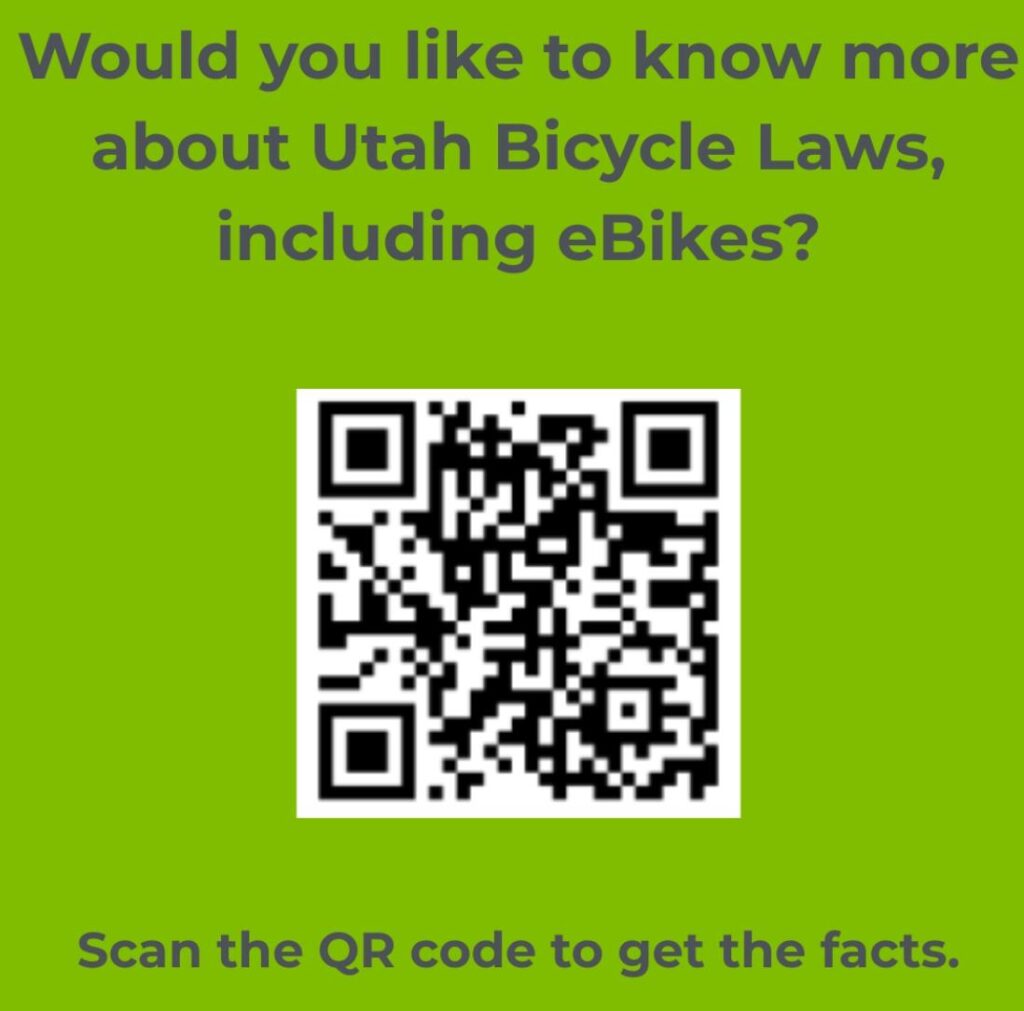
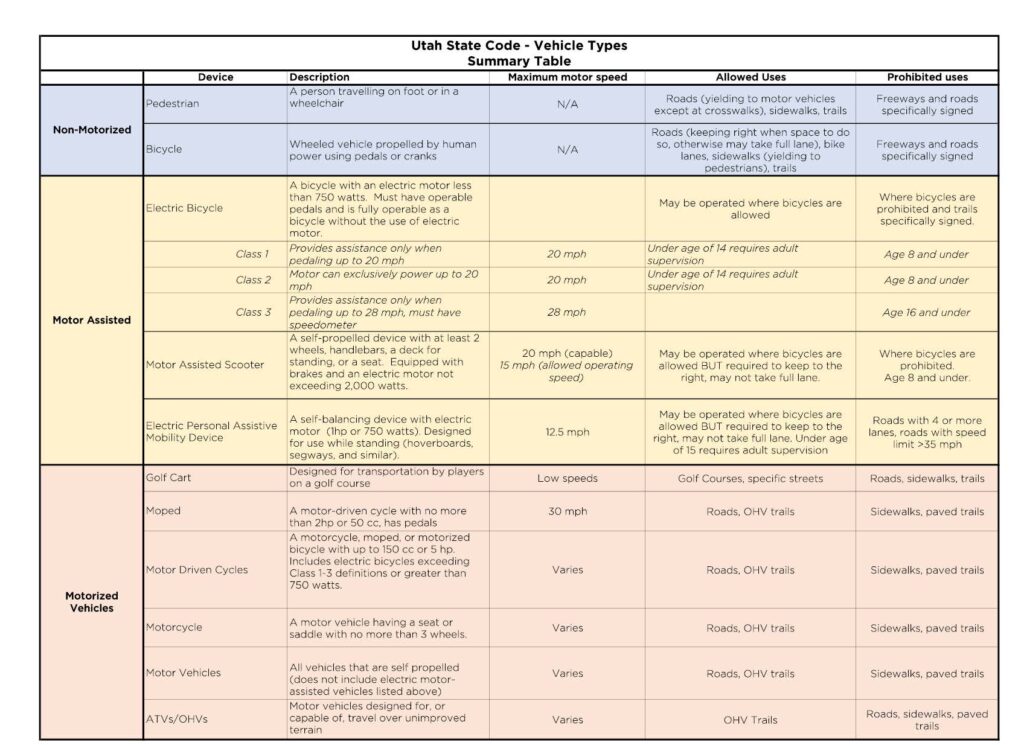
How can I request a Radar Trailer?
Please click here to submit a request.
